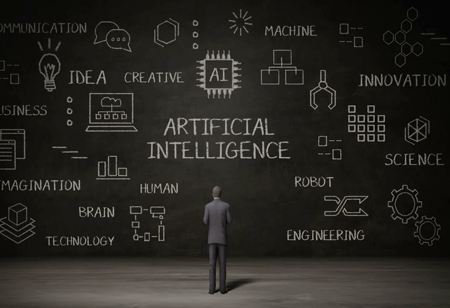THANK YOU FOR SUBSCRIBING
Pragmatic AI Makes Life More Practical
From neural networks and ML automation to virtual assistants and human-like robots, AI has been unobtrusively delivering benefits for quire a time.

By
Apac CIOOutlook | Tuesday, July 02, 2019
Stay ahead of the industry with exclusive feature stories on the top companies, expert insights and the latest news delivered straight to your inbox. Subscribe today.
From neural networks and ML automation to virtual assistants and human-like robots, AI has been unobtrusively delivering benefits for quire a time.
FREMONT, CA: Pragmatic AI is not just one technology but a set of building chunks that, when working collectively, are advanced enough to provide intelligence to applications and add considerable business value. From automating client service transactions to predicting consumer buying patterns, pragmatic AI has been aiding humans to achieve higher levels of efficiency and competence.
Three key sorts of pragmatic AI and how they are being applied today are:
1. Speech Recognition and NLP:
Virtual assistants and NLP tools, which recognize spoken commands, are providing users with the prospect to communicate with a computer (with Chatbots, specifically). Through uncomplicated interactions, users can get guidelines, find the nearby coffee shop, or get score updates from the latest sporting events.
The speech recognition tools are helping customers link directly with vendors and check out securely and quickly with applications provided by them. The latest NLP technology can interpret a content sent to any organization and pinpoint the conversational norms from past interactions. NLP can also identify common key points of data by deciphering the location, date, and time related to a device.
Check out: Top Artificial Intelligence companies
2. Predictive Analytics:
The process of incorporation of AI by enterprises to leverage the past and forecast the future is called predictive analytics. By seeping through lots of data and recognizing patterns in behavior, organizations can make improved business decisions.
For instance, by employing different types of data patterns, medical device producers can recognize patterns and predict which device has a high probability of failing. In health care, predictive analytics is aiding payers and providers depending on previous behavioral patterns.
3. Computer Vision and Image Recognition:
Through satellite imaging and other modes of visual recognition, AI algorithms can identify objects in remote locations. Image detection of this type is assisting in calculating the longevity of gas and oil refineries, chart urban planning routes to alleviate traffic congestion and find far-off construction sites. It has been also enhancing the work of doctors in identifying potential anomalies in X-ray images for further examination.





